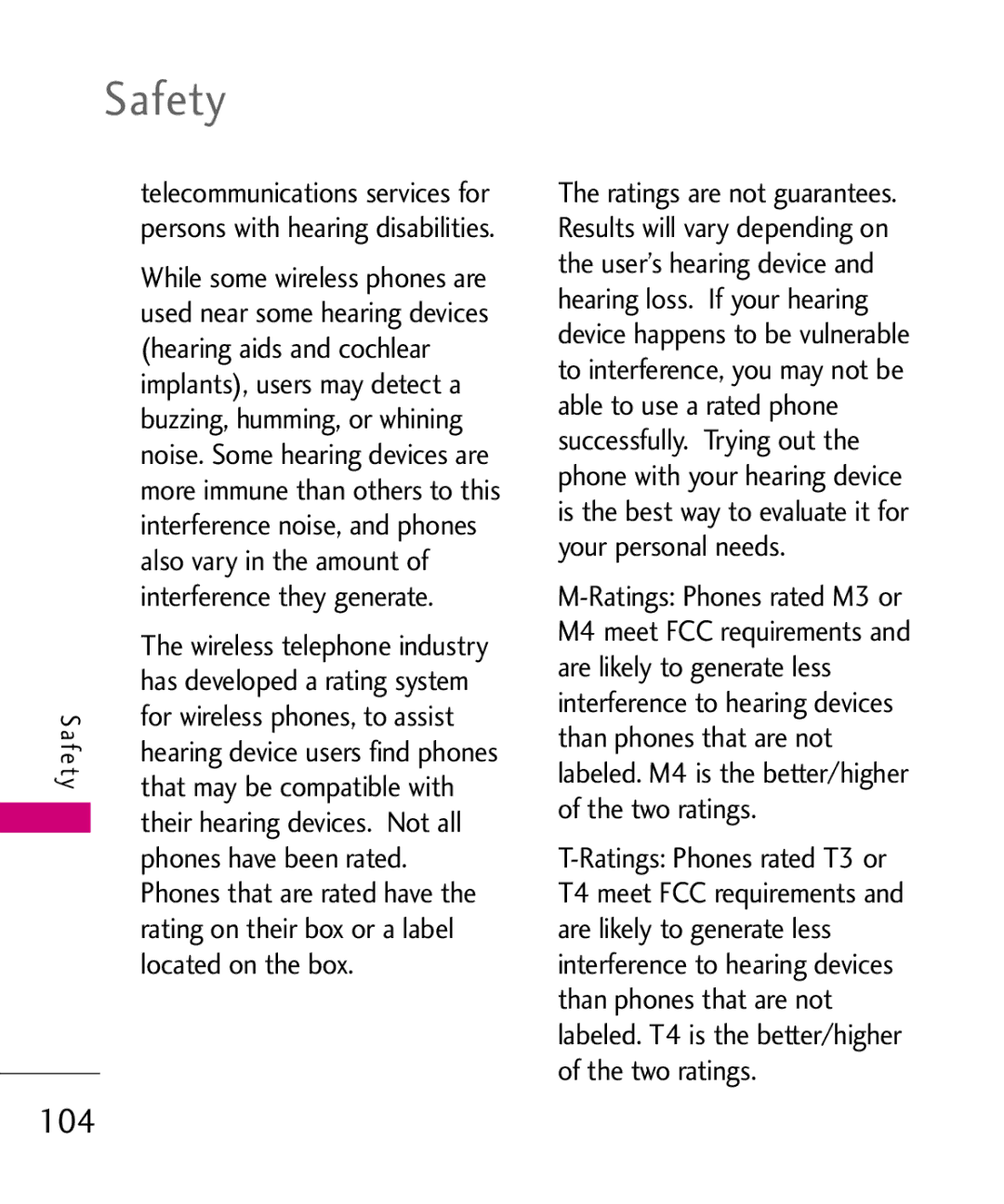Safety
|
| telecommunications services for |
|
| persons with hearing disabilities. |
|
| While some wireless phones are |
|
| used near some hearing devices |
|
| (hearing aids and cochlear |
|
| implants), users may detect a |
|
| buzzing, humming, or whining |
|
| noise. Some hearing devices are |
|
| more immune than others to this |
|
| interference noise, and phones |
|
| also vary in the amount of |
|
| interference they generate. |
Safety | The wireless telephone industry | |
has developed a rating system | ||
|
| for wireless phones, to assist |
|
| hearing device users find phones |
|
| that may be compatible with |
|
| their hearing devices. Not all |
|
| phones have been rated. |
|
| Phones that are rated have the |
|
| rating on their box or a label |
|
| located on the box. |
104
The ratings are not guarantees. Results will vary depending on the user’s hearing device and hearing loss. If your hearing device happens to be vulnerable to interference, you may not be able to use a rated phone successfully. Trying out the phone with your hearing device is the best way to evaluate it for your personal needs.
